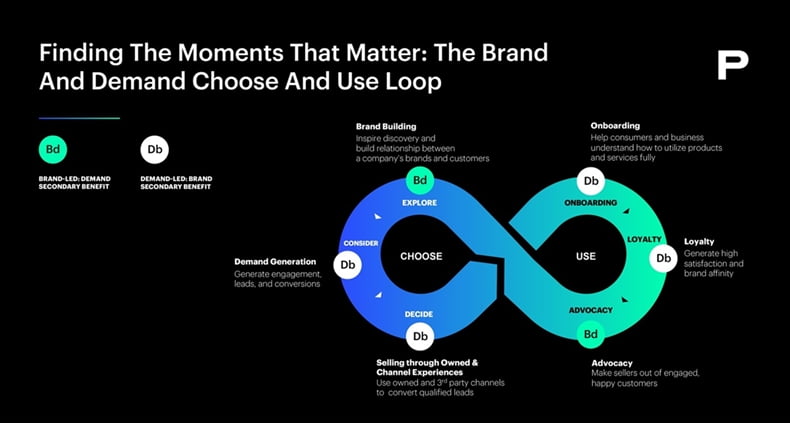For marketers who spent most of the past year trimming budgets and delaying launches, it's no shock that 2024 will bring more of the same.
A recent study from Gartner found that 75% of senior marketers report being asked to do more with less, and 86% agree that those budget cuts mean making big changes in how they work to achieve their goals.
If marketers thought the economic outlook would become clearer, they're likely disappointed. The risk of recession in the year ahead keeps falling and labor markets are strong, but consumer confidence is still shaky. That means B2B companies face slower growth, more volatility, and less visibility. Every budget is under the microscope.
Is that bad news for agile marketers? Not always. Judicious belt-tightening can allow marketing leaders to think creatively and establish new ways of working. AI tools can help, and undoubtedly will, but there are many proven methods you can take on now.
Six Steps Marketers Can Take to Do More With Less
B2B companies should be thinking about six critical steps marketing organizations can take to stay focused and drive optimal outcomes.
These adjustments may hurt; for those willing to be innovative, however, the results can strategically balance brand and demand marketing agendas that will lead to more growth opportunities.
1. Translate business objectives into quantified customer goals
Remain diligent about driving business outcomes with a customer-focused lens. All activity should point directly at delivering business value for the short and long term. Ensure you have customer-focused goals based on acquisition, retention, cross-selling and upselling, making sure your brand is worth paying more for. Commitment to those goals is the foundation for maximizing resources.
With goals in place, regularly track and align efforts to business outcomes. Develop a leading and lagging metrics ladder, particularly critical for long purchase cycles, and establish quarterly check-ins. By doing so, companies will know what parts of the marketing plan work best. This goal-centric behavior builds confidence that every element of the marketing budget is driving ROI. And if some components underperform, you'll be better positioned to pivot.
2. Do fewer things
Peter Drucker famously wrote, "Management is doing things right. Leadership is doing the right things." Marketers know that's true. Every dollar works hard, but success depends on how those dollars are invested. That's why it's important to prioritize growth opportunities and continuously analyze and optimize to keep efforts practical and efficient.
While that may sound obvious, but in a world where specialists and digital marketing skills are at a premium, many companies are overspending to build new execution muscle or overexerting with too many initiatives. While actively improving your search and social skills, for example, don't forget why you are on those channels in the first place.
Before greenlighting any initiative, even small ones, determine which goal they support. Calculate the cost in dollars, resources and time.
3. Prioritize moments that matter most in your customer's journey
Journey-based planning has become critical in the digitally driven marketers' toolbox. However, as marketers adopt this concept, many spread resources too thin, splintering impact.
To maximize usefulness, marketers must decide on the most critical barriers to address and seize opportunities to build out signature and memorable moments.
Prioritizing moments that matter calls for tough choices, especially when you need to do more with less. You can't do it all. But you have to support your goals and your product and sales partners.
Companies more concerned about customer acquisition will likely lean toward moments of awareness and consideration. Those focused on retention and loyalty may choose post-purchase moments. And keep a list of those moments you are choosing to ignore now.
 Source: Prophet
Source: Prophet
4. Sharpen your value propositions on superiority that matters
To stay relentlessly relevant and earn customer respect and loyalty, brands must deliver meaningful, purposeful connections. That requires appealing to people's emotions with a distinctive brand purpose, promise, and principles.
Many brands believe they understand why they exist. But in this low-spending climate where every dollar counts, brands should revisit how they think about all functional benefits and quality and superiority claims.
Revise and sharpen those demand-based value propositions at the umbrella brand and product level: Is every promise crisp, compelling, and competitive? How can you better demonstrate that superiority to target audiences in ways they can see and feel?
Challenge assumptions: Customers change and evolve, and so should your value proposition. Weave those promises into the brand story and reflect them in all in-market executions. Doing so can boost short-term revenues and support long-term brand health.
5. Give your creative assets a makeover
With so much attention on where and how communications are delivered, it's easy to forget that the success of every campaign depends on the creative.
Brilliant campaign ideas and breakthrough experiences are a must-have. Creative work at every point in the journey needs to be branded and rooted in demand-based product truths. It's not enough to love an asset on the drawing board. It must stand out in the specific context in which people will discover it.
Build on the basics. That can mean adding more demand marketing strategies to your top-of-funnel efforts or dialing up brand messaging during the purchasing stage. Explore ways to integrate AI into the creative process to drive efficiency and execution.
6. Elevate scenario planning
It sometimes feels like we work in patchy fog. Will "do more with less" be the bumper sticker for just a few more quarters or the foreseeable future? No one knows. With effective scenario planning, however, the murkiness matters less; in fact, companies can thrive because of the curveballs, not just survive them.
Teams can use scenario planning for the near term, even at the level of an individual initiative. Think of it as a game. Start with a cross-disciplinary team for your next launch or campaign with a "gameboard." Players can weigh the impact of shifting media spending, changing messaging, or revisiting social strategies, then think about codifying and socializing the contingency plans. Identify when, how and who is responsible for tracking and implementation. Use additional cross-functional planning sessions to follow up on hot topics and assign owners to chosen levers.
A Shift in the Marketing Mindset
Instead of thinking about doing more with less as negative, challenge yourself to see it as a path to unlocking growth. And think about sharing that perspective with teams, which often feel demoralized by budget cuts.
By intensifying customer-centricity, doing fewer things, focusing on moments that matter, and sharpening value propositions, show them how to navigate with constrained resources and emerge stronger.
Taking those steps can increase impact, build resilience, and pave the way for meaningful long-term growth.
More Resources on Brand and Demand Marketing
Brand + Demand: Taking B2B Marketing From Cost Center to Value Center
Direct Response Versus Awareness Advertising: Which Way Should You Go?
How to Craft a Marketing Strategy That Gives You a Sustainable Advantage





